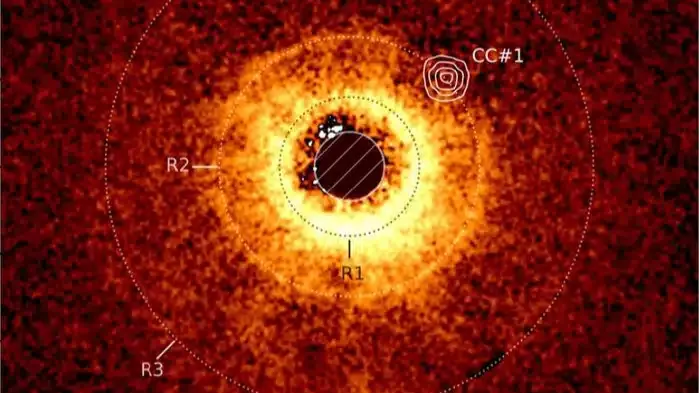
James Webb Telescope Makes History with First Direct Image of a New Exoplanet
2025-06-28
Author: Mei
A Groundbreaking Achievement in Astronomy
The James Webb Space Telescope (JWST) has reached an extraordinary milestone by capturing its first direct image of an exoplanet, TWA 7 b. This revealing photograph showcases a Saturn-sized planet orbiting a young star named TWA 7, which lies relatively near our planet. At about 0.3 times the mass of Jupiter, TWA 7 b has claimed its place as the smallest exoplanet ever captured in direct imaging—an exciting breakthrough in the realm of planetary science.
Unveiling a Hidden World
In a recent study published in the journal **Nature**, astronomers explained their focus on TWA 7, which is characterized by a nearly face-on dusty disk displaying distinct ring formations. Using the Mid-Infrared Instrument (MIRI) paired with a coronagraph, researchers successfully blocked the bright light of the star, allowing them to spot the faint glow of the planet. Analysis revealed a subtle infrared signal located approximately 1.5 arcseconds from TWA 7, about 50 times the distance from Earth to the Sun.
The planet resides within a gap in the second dust ring surrounding TWA 7. Its brightness and color matched theoretical predictions for a young, cold planet with a mass nearing that of Saturn. This observation suggests that TWA 7 b is indeed influencing the surrounding dust, akin to the behavior of an orbiting planet.
Advancing Our Understanding of Smaller Worlds
The discovery of TWA 7 b marks a significant advancement for the JWST, as this planet is approximately ten times lighter than any previously captured exoplanet. This capability hints at the telescope’s potential to one day imager planets that weigh as little as 10% of Jupiter's mass, inching ever closer to discovering Earth-sized worlds.
Future Prospects for Exoplanet Research
The successful imaging of TWA 7 b opens the door for exciting new research into exoplanets. Directly observing smaller celestial bodies will enhance our understanding of their atmospheres, compositions, and even their potential to sustain life. With advances in technology, astronomers are optimistic about the future of finding Earth-like planets, which could shed light on conditions necessary for life beyond our solar system.
A New Era for Astronomy
The JWST represents a transformative leap in astronomy, where the direct imaging of distant planets is becoming a viable reality. This landmark achievement not only broadens our knowledge of planetary systems but also ignites the quest for extraterrestrial life. As researchers delve deeper into the data from the JWST, the anticipation for thrilling discoveries in the universe continues to grow.





 Brasil (PT)
Brasil (PT)
 Canada (EN)
Canada (EN)
 Chile (ES)
Chile (ES)
 Česko (CS)
Česko (CS)
 대한민국 (KO)
대한민국 (KO)
 España (ES)
España (ES)
 France (FR)
France (FR)
 Hong Kong (EN)
Hong Kong (EN)
 Italia (IT)
Italia (IT)
 日本 (JA)
日本 (JA)
 Magyarország (HU)
Magyarország (HU)
 Norge (NO)
Norge (NO)
 Polska (PL)
Polska (PL)
 Schweiz (DE)
Schweiz (DE)
 Singapore (EN)
Singapore (EN)
 Sverige (SV)
Sverige (SV)
 Suomi (FI)
Suomi (FI)
 Türkiye (TR)
Türkiye (TR)
 الإمارات العربية المتحدة (AR)
الإمارات العربية المتحدة (AR)